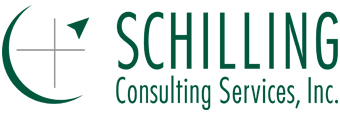You need BOTH KINDS of Change to make a good Plan.
It's all about Change. Isn't it? The word “change”, by itself, can trigger a variety of immediate emotions in people, and not all of them are pleasant. This seems to be the case more than ever in today’s world. And you have probably heard it said that “people don’t like change” or “it is hard for people to change.” That may be true in many cases, but there are also many inspiring stories of people that intentionally changed some aspect of their life with wonderful results. So it seems there are really two types of change: the ones that happen to us (or around us) and the ones we initiate ourselves.
Change in Organizations If this concept of two types of change is ringing true in your personal life, it may also be familiar in your organization. There is no shortage of management literature devoted to the topic of change...how to anticipate it, understand it, embrace it, manage it, successfully execute it, and more! Change is relevant to many aspects of organizational life, and in one particular aspect, Strategic Planning, it can be a key to the best possible outcomes.
Change in Planning The heart of a Strategic Plan is the Desired Future State...where we want to end up at the end of the Plan’s timeframe. This is usually expressed in the form of a Vision Statement or a set of Goals. In order to develop a Desired Future State that is both compelling and achievable, the Plan development process needs to begin with two kinds of assessments. The first is an assessment of the relevant industry or economic sector for your organization. There are great sources for learning about the current issues in your industry, and also the trends and best practices (i.e. changes) that are emerging in response to the issues. These issues, trends, and best practices can be summarized and comprise one of several forms of vision input for consideration by the team working to develop the new Strategic Plan.
From Reaction to Anticipation The second kind of assessment examines the market place in which you compete or deliver services. This market may or may not be tied to a specific geography, but it is usually tied to a specific sector of consumers or individuals who need and benefit from the products or services you provide. The market for your service may even be internal to your organization if you provide support services for one or more other functional areas. The more you can define your market and learn about the current and evolving needs and expectations of people in that market, the better you will be able to craft a vision or goals that will deliver on those needs and expectations. With the right kind of research and input, you can even anticipate how the needs and expectations will most likely evolve over time. The highlights of all of this knowledge can similarly be assembled for review and consideration by the Planning Team.
Finding the Gaps With the Desired Future State determined, a third assessment, an Organizational Assessment, is used to help understand where the organization or work group is today. This usually entails a review of key performance measures from dashboards or scorecards, as well as feedback from a host of different types of internal and external stakeholders. Other tools like a SWOT Analysis can also help to develop the Organizational Assessment. Once complete, the Planning Team can compare the Organizational Assessment (current state) to the Vision or Goals (desired future state) to identify the gaps between the two and begin identifying how best to address the gaps.
Making Change This is where the other type of change, the kind we initiate, plays a critical role. There are a number of tools to help with this, but all the ideas that emerge are the seeds of changes that the organization must initiate to achieve the transition to the Desired Future State. Sometimes referred to as Strategies (themes) and Tactics (specific action items), this second type of change is actually the core of implementing the Strategic Plan.
Change for the Better When your organization or team recognizes, and even anticipates, changes that can impact them (the changes around us), and uses that knowledge, in turn, to change what they do and how they do it (the changes they initiate), change becomes an ally (Industry and Market Assessments) and a tool (strategies, tactics). It is no longer something to fear and simply react to any way we can. It is a key part of how we create change for the better.
If you want to change the way your organization looks at change, and make the planning process something that makes people smile, contact me at your convenience.
Jeff

Leave a Reply
Want to join the discussion?Feel free to contribute!